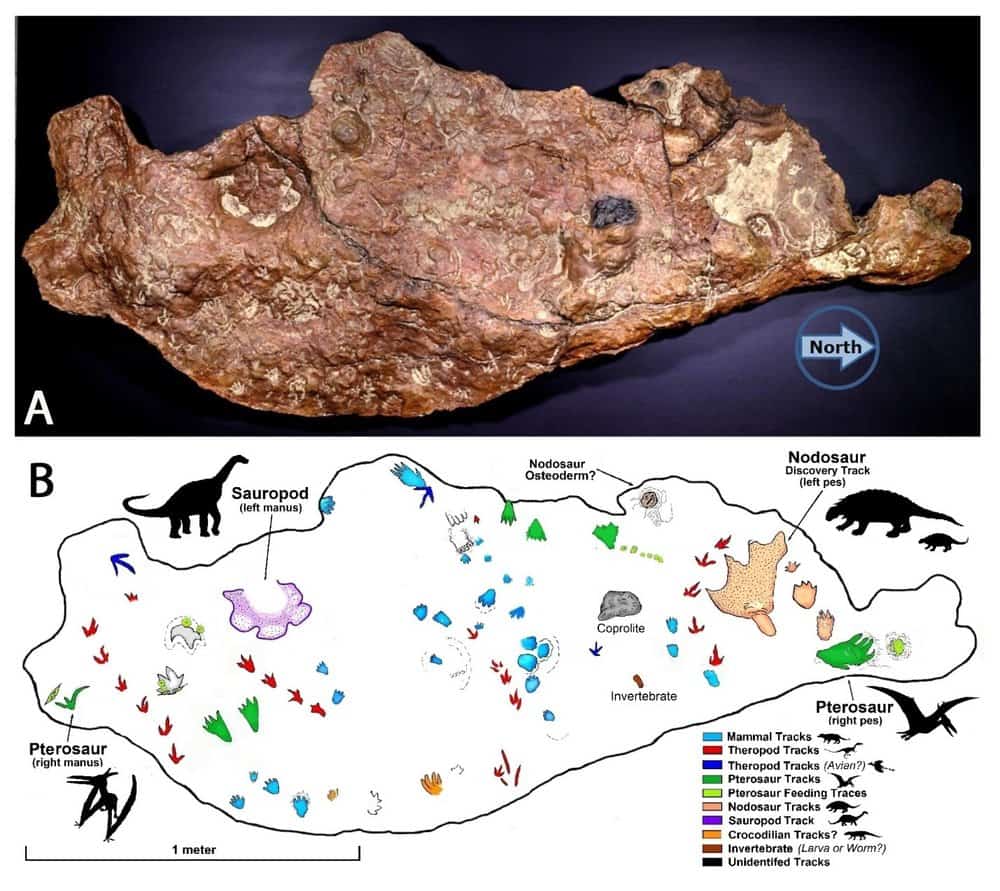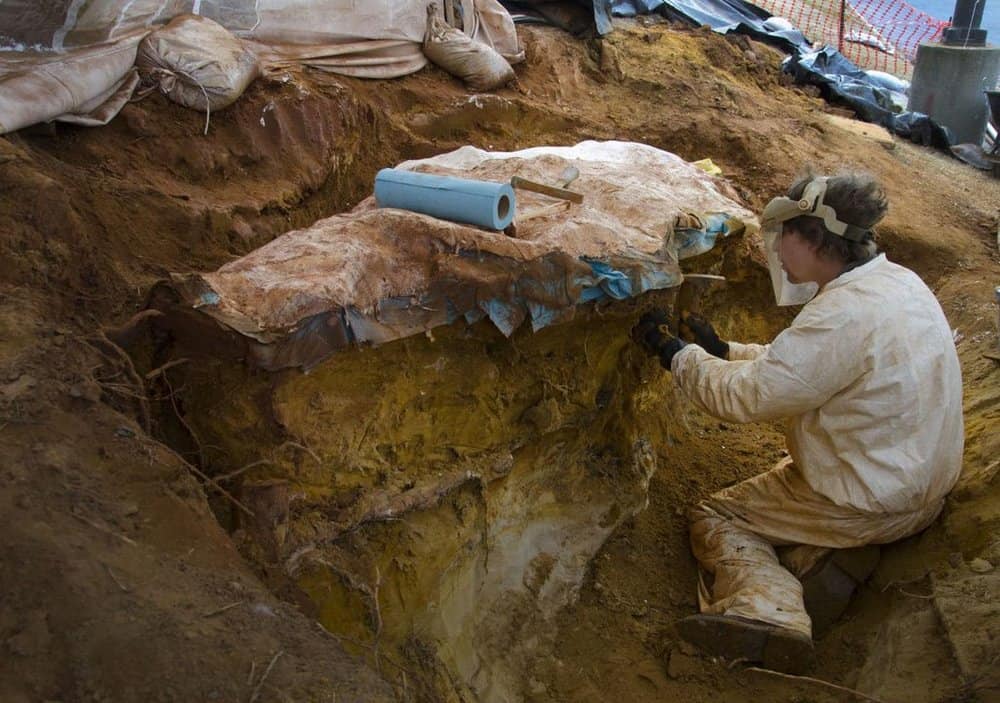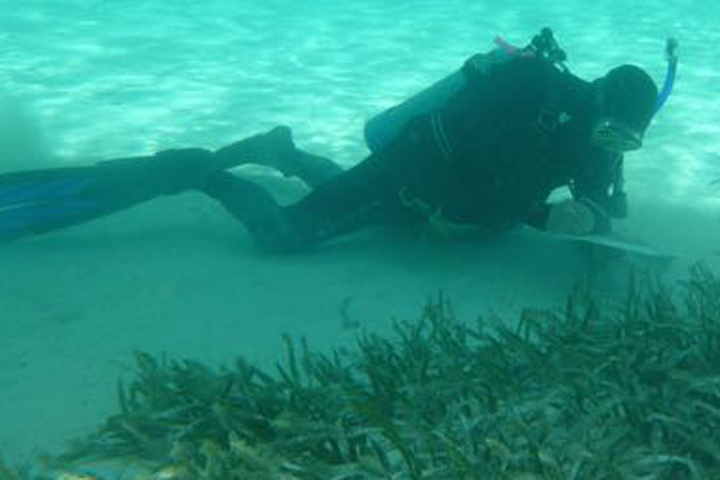NASA’s Goddard Space Flight Center, in Greenbelt, Maryland, is full of space scientists dedicated to learning about the universe beyond our own Earth. But one of the most exciting discoveries ever made at NASA Goddard came from a dinosaur fossil expert who just happened to be in the parking lot.
Photo: Rebecca Roth/NASA/GSFCRay Stanford, an amateur paleontologist, was dropping his wife, a Goddard employee, off at work back in 2012 when he noticed an intriguing rock in the parking lot. It turned out to be a slab of sandstone, roughly the size of a dining room table, that contained fossils of 70 different animal tracks, both dinosaurs and mammals, from 100 million years ago.
A new paper just published in Scientific Reports, co-authored by Dr. Stephen Godfrey from Calvert Marine Museum, details the incredible find and what experts have learned about it in the years since then. Dr. Godfrey coordinated the excavation of the slab and produced the mold and cast for in-depth study. Eight species walked across what was once a muddy, low riverbank, leaving behind footprints of creatures as small as squirrel-sized mammals to dinosaurs the size of tanks. Scientists can tell the tracks were all likely made within days of each other, because none overlap. The fossil footprints show a rare glimpse of mammals and dinosaurs interacting.
One of the study’s co-authors, University of Colorado paleontologist Martin Lockley, says the concentration of mammal tracks on the slab is greater than any other in the world.
“I don’t think I’ve ever seen a slab this size, which is a couple of square meters, where you have over 70 footprints of so many different types. This is the mother lode of Cretaceous mammal tracks,” said Lockley.
The slab was so well-preserved because sediment covered it shortly after the tracks were made, keeping it undisturbed.
“It’s a time machine,” Stanford said. “We can look across a few days of activity of these animals and we can picture it. We see the interaction of how they pass in relation to each other. This enables us to look deeply into ancient times on Earth, and I think it’s just tremendously exciting.”
Lockley and Stanford believe the wide diversity and number of tracks show many of the animals were feeding in the area. They theorize that maybe the small dinosaurs were preying on the small mammals, and the larger dinosaurs could have been hunting both smaller species.

Compton Tucker is a Goddard Earth scientist who helped with the excavation, and created a display of the cast in Goddard’s Earth science building.
“People ask me why were all these tracks in Maryland?” says Tucker.
He jokes, “Maryland has always been a desirable place to live.”
“This could be the key to understanding some of the smaller finds from the area, so it brings everything together,” Lockley said. “This is the Cretaceous equivalent of the Rosetta stone.”




